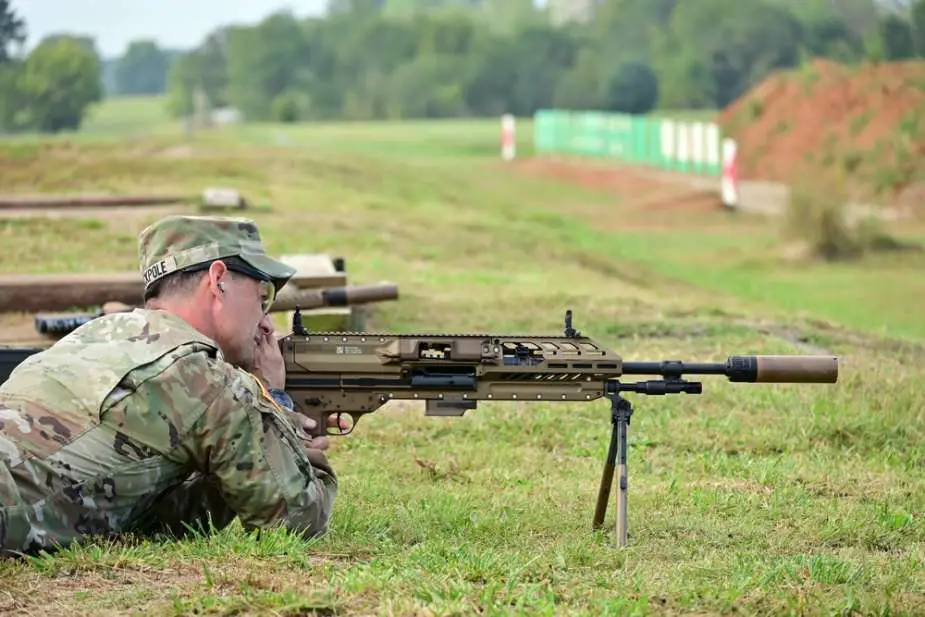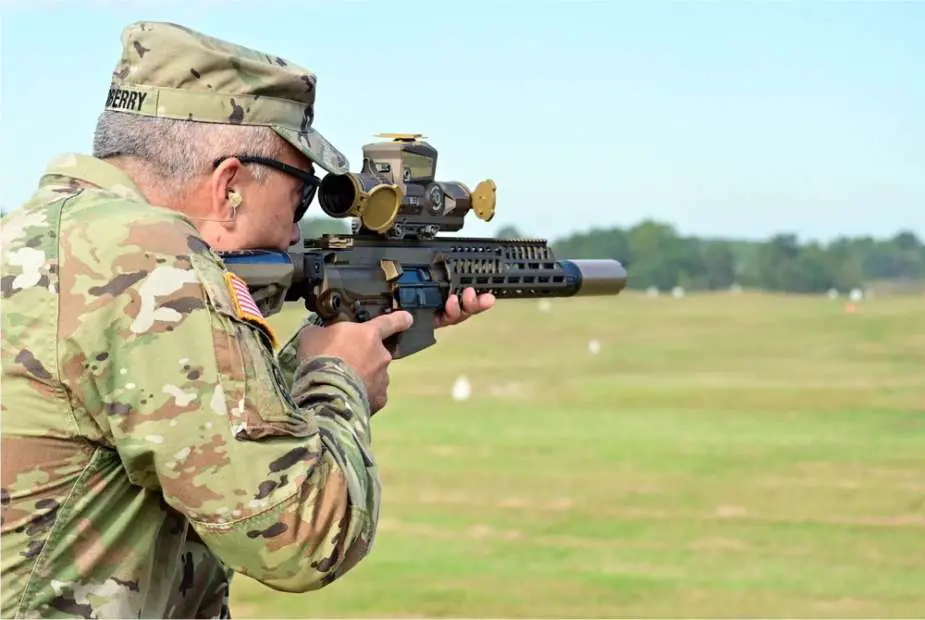US Army allocates record budget for NGSW Next Generation Squad Weapons in 2025
As reported by Davis on March 11, 2024, the US Army's budgetary plan for the fiscal year 2025 indicates a notable increase in allocations for the Next Generation Squad Weapon (NGSW) project. The plan outlines a shift in financial commitment, with an increase from $132.909 million allocated in previous fiscal periods to $367.292 million for FY 2025, aimed at funding the procurement of 39,836 units across various segments.
Follow Army Recognition on Google News at this link

The decision to adopt the M7 and M250 originated from a 2017 study indicating that the 5.56mm rounds previously used were less effective against newly developed body armor. (Picture source: US DoD)
The detailed allocations within the NGSW project include $23.133 million for the acquisition of 1,772 units of the M250 Automatic Rifle (NGSW-AR), which is intended to replace the currently employed M249 Squad Automatic Weapon (SAW) within the Close Combat Force. Additionally, $91.447 million is set aside for the purchase of 18,019 units of the M7 Rifle (NGSW-R), aiming to supplant the M4A1 Carbine in the same operational capacity. The budget also includes a considerable sum of $252.712 million for the procurement of 20,045 units of the M157 Fire Control systems, which are expected to be integrated with the M7 Rifle and the M250 Automatic Rifle to enhance combat effectiveness.
The purpose of the NGSW project, as indicated by the budgetary figures, is to update and enhance the Army's current weapon systems. The updates are intended to provide improved range, accuracy, and a reduced likelihood of user detection through minimized muzzle flash and sound. Additionally, the project includes financial plans for increasing production capacities to meet specified deployment timelines.
The project carries an ID Code of 'B', suggesting that the systems and weapons involved are currently in developmental and procurement stages and have not yet been integrated into active service. The financial outline for the NGSW project illustrates a distinct allocation of funds across different components, with no additional related program elements listed, indicating a focused investment in the NGSW initiative.
Furthermore, the NGSW project has shown an increase in both the number of units and total costs over the designated period. For example, the M250 Automatic Rifle (NGSW-AR) has seen an increase from 251 units at approximately $3.088 million in FY 2023 to 1,772 units at $23.133 million in FY 2025. The M7 Rifle (NGSW-R) segment has escalated from 2,501 units costing around $14.253 million in FY 2023 to 18,019 units at $91.447 million in FY 2025. Additionally, the M157 Fire Control system allocation has expanded from 7,708 units costing $115.568 million in FY 2023 to 20,045 units at $252.712 million in FY 2025.
By replacing the M4 carbine and M249 Squad Automatic Weapon with the new M7 Squad Weapon and M250 Squad Automatic Weapon, the US Army moved from 5.56mm rounds to 6.8mm rounds for the first time in over 65 years. The US Army has stated that the new weapons are designed to offer improvements in terms of accuracy, range, and lethality. Additionally, these weapons are described as being lightweight, featuring reduced recoil, improved barrel performance, and integrated sound and flash reduction at the muzzle.
The decision to adopt the M7 and M250 originated from a 2017 study indicating that the 5.56mm rounds previously used were less effective against newly developed body armor, which has been increasingly used by adversaries such as Russia and China. This type of armor has been found to stop 5.56mm rounds at medium to long ranges (300–500 yards). The study's findings were echoed by General Mark Milley, then Army chief of staff, who highlighted the protective capability of new body armor against 5.56mm ammunition. This situation led to the initiation of the Next Generation Squad Weapon (NGSW) program in 2018, culminating in the selection of SIG Sauer to provide the M7 and M250, along with the new 6.8mm ammunition.
The new 6.8mm ammunition has been developed to address these concerns, offering better penetration capabilities and intended to be more effective against modern body armors and barriers. This has been demonstrated in tests where 6.8mm rounds penetrated obstacles that typically deflected 5.56mm rounds. For instance, during a live fire exercise in September 2023, multiple 6.8mm rounds penetrated cinder blocks and hit a target, whereas 5.56mm rounds did not achieve full penetration.
In addition to the ammunition upgrade, the M7 and M250 will feature advanced technological enhancements, including upgraded optical and thermal sights. They will also incorporate a new fire control system, which provides computer-aided ballistics for improved targeting accuracy. This system allows soldiers to adjust for distance and bullet drop automatically, facilitating quicker response times in combat situations. The fire control system, which contains preprogrammed ballistics information, can be adapted for use with almost any small arms weapon in the Army's arsenal. While the Close Combat forces, comprising 120,000 soldiers, will be the primary recipients of the new weaponry, the broader Army force will continue to use the M4 and M249 for the foreseeable future.

During a live fire exercise in September 2023, multiple 6.8mm rounds penetrated cinder blocks and hit a target, whereas 5.56mm rounds did not achieve full penetration. (Picture source: US DoD)
- Hits: 6992
















